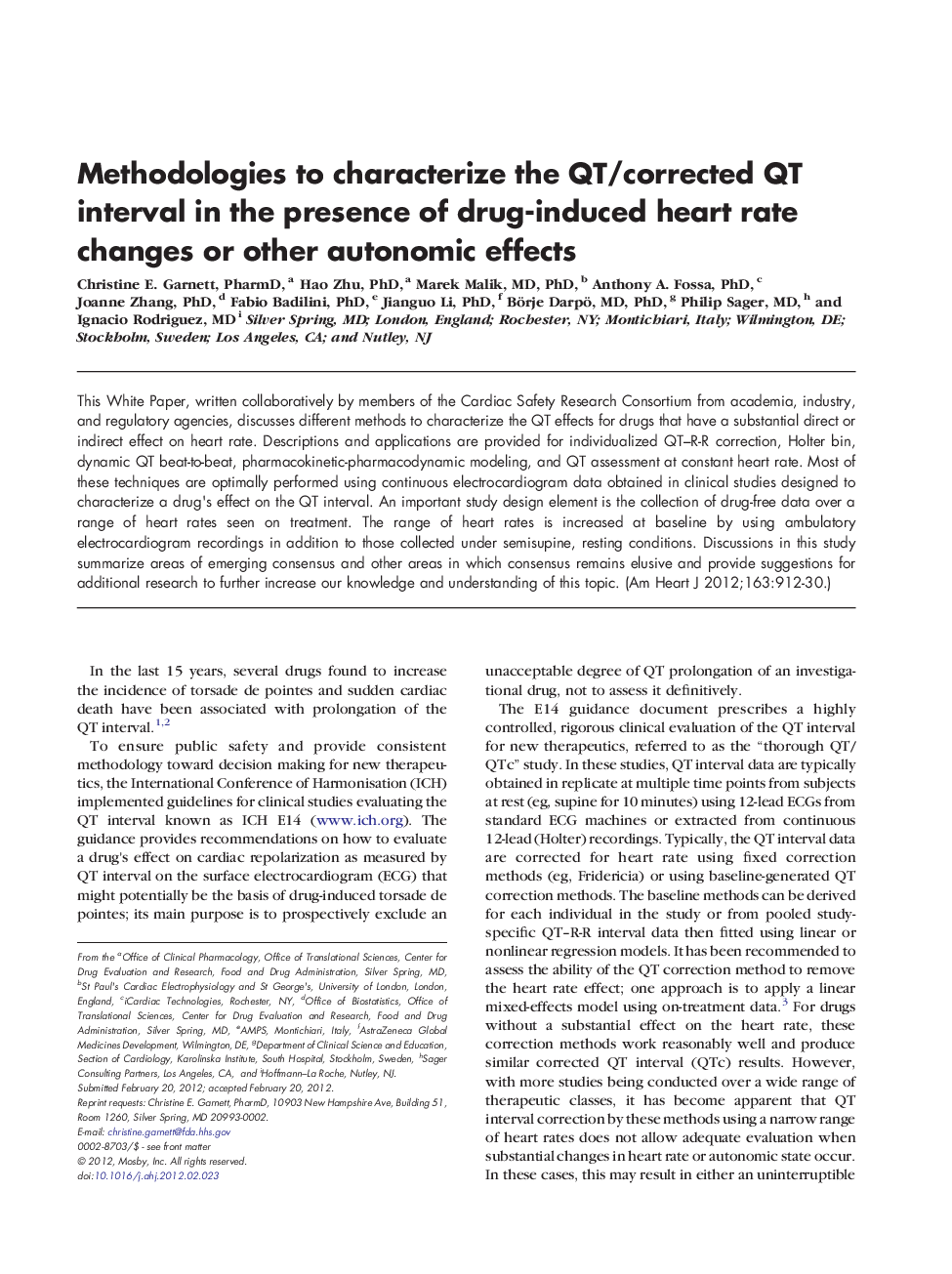| Article ID | Journal | Published Year | Pages | File Type |
|---|---|---|---|---|
| 2849510 | American Heart Journal | 2012 | 19 Pages |
This White Paper, written collaboratively by members of the Cardiac Safety Research Consortium from academia, industry, and regulatory agencies, discusses different methods to characterize the QT effects for drugs that have a substantial direct or indirect effect on heart rate. Descriptions and applications are provided for individualized QT–R-R correction, Holter bin, dynamic QT beat-to-beat, pharmacokinetic-pharmacodynamic modeling, and QT assessment at constant heart rate. Most of these techniques are optimally performed using continuous electrocardiogram data obtained in clinical studies designed to characterize a drug's effect on the QT interval. An important study design element is the collection of drug-free data over a range of heart rates seen on treatment. The range of heart rates is increased at baseline by using ambulatory electrocardiogram recordings in addition to those collected under semisupine, resting conditions. Discussions in this study summarize areas of emerging consensus and other areas in which consensus remains elusive and provide suggestions for additional research to further increase our knowledge and understanding of this topic.
